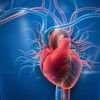The Top 5 Heart Conditions Treated by Cardiologists
- 1. Coronary Artery Disease
- 2. Heart Failure
- 3. Arrhythmia
- 4. Valve Diseases
- 5. Congenital Heart Disease
1. Coronary Artery Disease
Coronary artery disease (CAD) is one of the most common heart conditions treated by cardiologists. It occurs when the arteries supplying blood to the heart become narrowed or blocked due to plaque buildup, restricting blood flow to the heart muscle. This can lead to chest pain (angina) or even heart attacks.
The treatment for CAD typically involves lifestyle changes, medications, and in some cases, procedures like angioplasty or coronary artery bypass surgery. The goal is to restore proper blood flow to the heart and reduce the risk of further complications.
For example, John, a 60-year-old man, was diagnosed with CAD after experiencing chest pain. Through lifestyle changes and a successful stent placement, his condition improved, and he was able to return to a more active lifestyle. John’s case highlights the importance of early detection and intervention in treating CAD.
2. Heart Failure
Heart failure occurs when the heart is unable to pump blood effectively, leading to fluid buildup in the lungs and other parts of the body. This condition can develop due to several factors, including coronary artery disease, high blood pressure, or prior heart attacks.
Treatment for heart failure typically includes medications such as ACE inhibitors, beta-blockers, and diuretics to help manage symptoms. In severe cases, patients may require devices like a pacemaker or even heart transplant surgery.
Take the case of Emily, a 72-year-old woman diagnosed with heart failure. After a combination of medication and lifestyle modifications, she saw significant improvement in her symptoms and quality of life. Her story illustrates how early intervention and proper management can help patients live longer, healthier lives despite heart failure.
3. Arrhythmia
Arrhythmia refers to an irregular heartbeat, which can range from a slightly fast or slow rhythm to dangerous and life-threatening conditions like ventricular fibrillation. Cardiologists use a variety of diagnostic tools, such as EKGs, to detect arrhythmias and determine the most appropriate treatment.
Treatment for arrhythmias may involve medications to regulate the heart's rhythm, lifestyle adjustments, or procedures like catheter ablation to correct abnormal electrical pathways. For instance, Mark, a 45-year-old man, experienced episodes of irregular heartbeats that were treated with a simple procedure, restoring his heart’s normal rhythm.
In some cases, cardiologists may implant a pacemaker or defibrillator to help regulate the heart’s electrical impulses, providing long-term relief from arrhythmia.
4. Valve Diseases
Valve diseases occur when one or more of the heart's valves do not function properly, either leaking (regurgitation) or becoming narrowed (stenosis). These conditions can interfere with the flow of blood through the heart and lead to symptoms like shortness of breath, fatigue, and dizziness.
Cardiologists often treat valve diseases with medications, lifestyle changes, or surgical procedures like valve repair or replacement. One innovative treatment is transcatheter aortic valve replacement (TAVR), which is a minimally invasive procedure used to treat aortic valve stenosis in patients who may not be candidates for open-heart surgery.
Linda, an 80-year-old woman, benefited from a TAVR procedure after being diagnosed with aortic stenosis. Following the surgery, she was able to resume a more active life, showing how advanced treatments are transforming outcomes for patients with valve diseases.
5. Congenital Heart Disease
Congenital heart disease refers to heart defects that are present at birth. These defects can range from minor issues that don’t require treatment to serious conditions that require surgery or lifelong management.
Treatment depends on the severity of the defect and may involve medications, lifestyle changes, or corrective surgery. In recent years, advancements in pediatric cardiology have made it possible to treat many congenital heart defects with fewer risks and better outcomes.
For example, Alex, a young boy born with a hole in his heart, underwent surgery at a very young age. Today, he leads a healthy life, showing how early detection and intervention in congenital heart disease can make a significant difference in a patient’s quality of life.




















